By Sara Bass
All photos by Miriam Khudikyan
Joe and Margo Lazzari start their days by reading the Wall Street Journal alongside the L.A. Times. They point to this morning ritual as their education on the Seal Beach National Wildlife Refuge, on which they volunteer with the local chapter of the
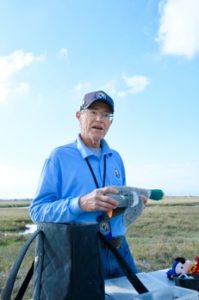
Friends organization. Margo says their volunteer choices are guided by the question of whether their work is somehow supported by what’s happening in our world today.
Since Oct. 2013, Joe has walked to the tidal marshes across the street from his home nearly every day, volunteering over 15 hours a week to restoring the ecosystem.
Margo invests her time more often in the Friends’ meetings and monthly tours.
They both share an appreciation for the opportunity to care for the environment, however local and simple their contribution may be, because all the world is connected.
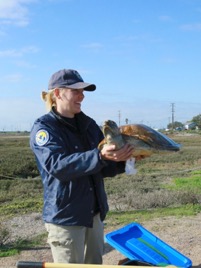
Few people generally, let alone those living in Seal Beach, know about the protected wetlands within the Naval Weapons Station off Seal Beach Boulevard.
Initially declared a Navy Preserve in 1969 (to prevent the expansion of the 605 freeway through a precious coastal habitat), the 963-acre parcel was formally declared a National Wildlife Refuge in 1972.
From the start, its mission has prioritized the conservation and restoration of migratory waterbirds, fish, and plants.
The wildlife refuge continues to rely on the unique partnership between the US Fish & Wildlife Service and the Navy (under the San Diego National Wildlife Complex) to oversee the recovery of the endangered species that depend on this tidal marsh.
In addition, partnership promotes the longevity of the habitat itself, and encourages public engagement.
The Navy provides personnel and some financial support for annual breeding surveys and predator management for four endangered species – the light-footed Ridgway’s rail, California least tern, green sea turtle, and Western snowy plover.
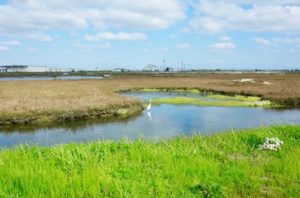
The Navy’s Environmental team also manages invasive species around the base and alongside the US Fish & Wildlife Service, is currently overseeing a sediment augmentation project intended to add a supplemental nesting habitat for endangered birds, replenish eel grass beds, and generally protect the saltwater marsh habitat against sea level rise.
In 2019, they started an ongoing project using radio trackers to monitor sea turtle migration.
The volunteer group – Friends of Seal Beach National Wildlife Refuge – consists of about 15 members, though just four who show up daily are responsible for the heavy lifting.
Volunteers comprise 20% of the national Refuge System’s workforce, according to the National Wildlife Refuge Association.
Refuge Manager Mac Purvin wrote, “They are an incredible group of folks, and it is only through their dedicated volunteering efforts that we are able to give our endangered species the best chance of possibly thriving.”
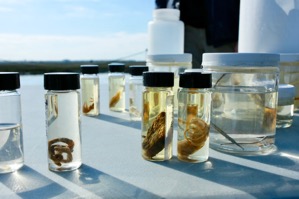
With limited funds from donations, the US Fish & Wildlife Service, a small federal subsidy, and grants, volunteers partake in various efforts across the Refuge. Among the programs the Friends group leads are Adopt-a-Highway, National Public Lands Day, maintenance of the native plant garden (Shirley’s Garden), and Eyes on the Colony.
The Eyes on the Colony program involves volunteers shaking cans of rocks at predators approaching the least tern nests on NASA island, hopefully deterring them from eating the eggs.
Volunteers also help conduct biological surveys to determine the population trends of the four endangered species under its purview and various mammals throughout the Refuge; they assist researchers in the sediment augmentation project, surveying the Pacific flyway shorebirds; and they generally support areas of the Refuge needing maintenance.
When funds are low, volunteers invest from their own pockets. One volunteer even funded and built the rafts supporting the Ridgeway’s rail nests. Mac describes them as “nest platforms” that offer the birds cover from predators.
Another strategic partnership within the Refuge is one that includes researchers from CSULB, Chapman, USGS, UCLA, and CSUF.

With the ever-ready help of the Friends, the military’s biologist Bob Schallmann, and a cooperative agreement with the Huntington Beach Wetlands Conservancy, these research partners pursue the refuge’s additional effort of preserving the health of tidal marshes themselves.
They use Secchi disks to measure the water’s turbidity or clarity and trolls to collect sediment with which they’ll document invertebrates. The quantity of pollution-tolerant invertebrates helps indicate the wellness of the habitat.
Tidal marshes critically sequester carbon from the atmosphere, buffer inland communities to wave erosion and flooding and provide recreational spaces to the public. The Seal Beach marshes are uniquely important because they provide a nursery habitat to the California halibut and offer a feeding habitat for the green sea turtle.
They are also more intact than most surrounding wetlands. Just about 20% of California’s historic wetland extent remains, according to the California Water Quality Monitoring Council, and our local tidal marshes offer a landscape for piloting projects potentially applicable to tidal marshes at large.
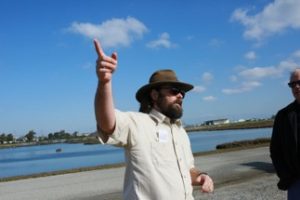
The Refuge research partners have been assessing the benefits of sediment augmentation, particularly in an environment of severe subsidence due largely to area oil drilling.
Over five years of monitoring, CSULB Professor Christine Whitcraft acknowledges the benefit of introducing invertebrates and plants to the dredged sediment. She says it expedites the ecosystem’s diversification and rehabilitation.
Still unclear, however, is the efficacy of the solution on every tidal marsh due to the five- to ten-year timeframe rehabilitation would likely take. Researchers also have not yet concluded the Ridgeway’s rails’ population trend in response to the initiative.
These birds attach their nests to the base of plants that rise and fall with the tide. Without sediment to offer stability, nests are vulnerable to floating away. Whitcraft and her colleagues are hopeful for further funding to continue annual monitoring.
Meanwhile, Joe narrates the joy of chasing down a least tern chick after weeks of watching over a nest of unhatched eggs. He can’t deny the satisfaction of bringing that chick to the researcher responsible for registering it, but he’s not disillusioned.
“Why do we have to do that? … It’s a way of measuring and it’s a statistic. Understood. [But] why are we worrying about individual birds when we should be caring about the habitat in general,” claimed Joe.
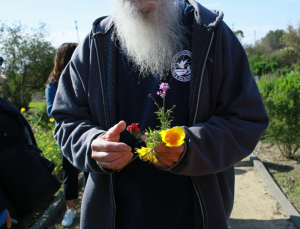
With continued community outreach, including monthly tours, the Friends of the Seal Beach National Wildlife Refuge hope to raise awareness and funds to invest in more projects throughout the Refuge and the community at large.
Purvin looks forward to implementing a living shoreline project in the future to mitigate the hazards of erosion due to sea level rise, while Joe anticipates implementing pollinator shelters throughout all of Seal Beach.
“There [are] so many ways to get involved. If you are interested in birds or plants, data and research, or just getting the chance to work with your hands, I encourage folks to get in touch with me or the Friends group [via sealbeachnwrfriends.org],” wrote Purvin.
“Taking a monthly tour on the Refuge is a great way to get to know about all the amazing things our volunteers work on every day,” added Purvin.

